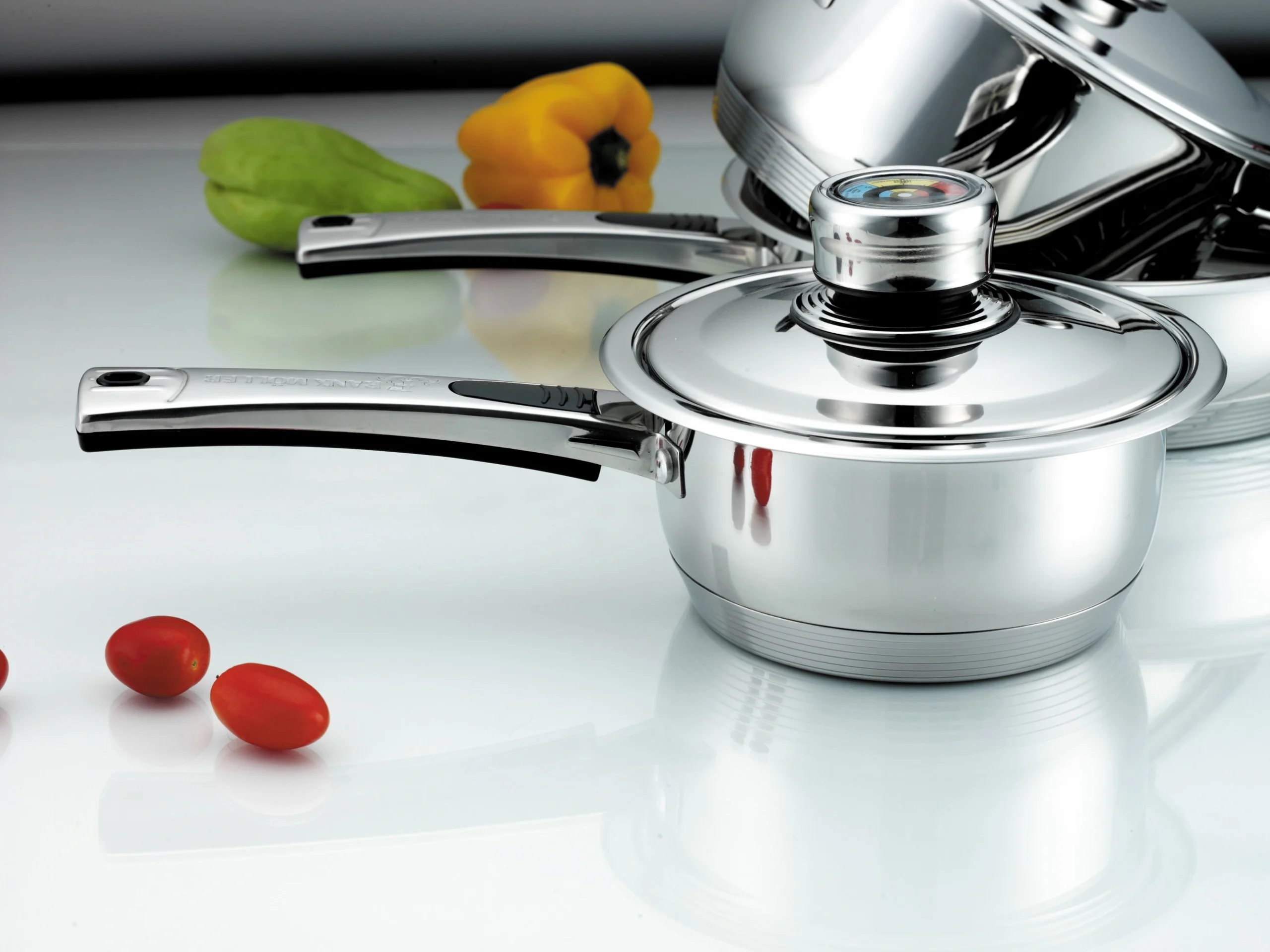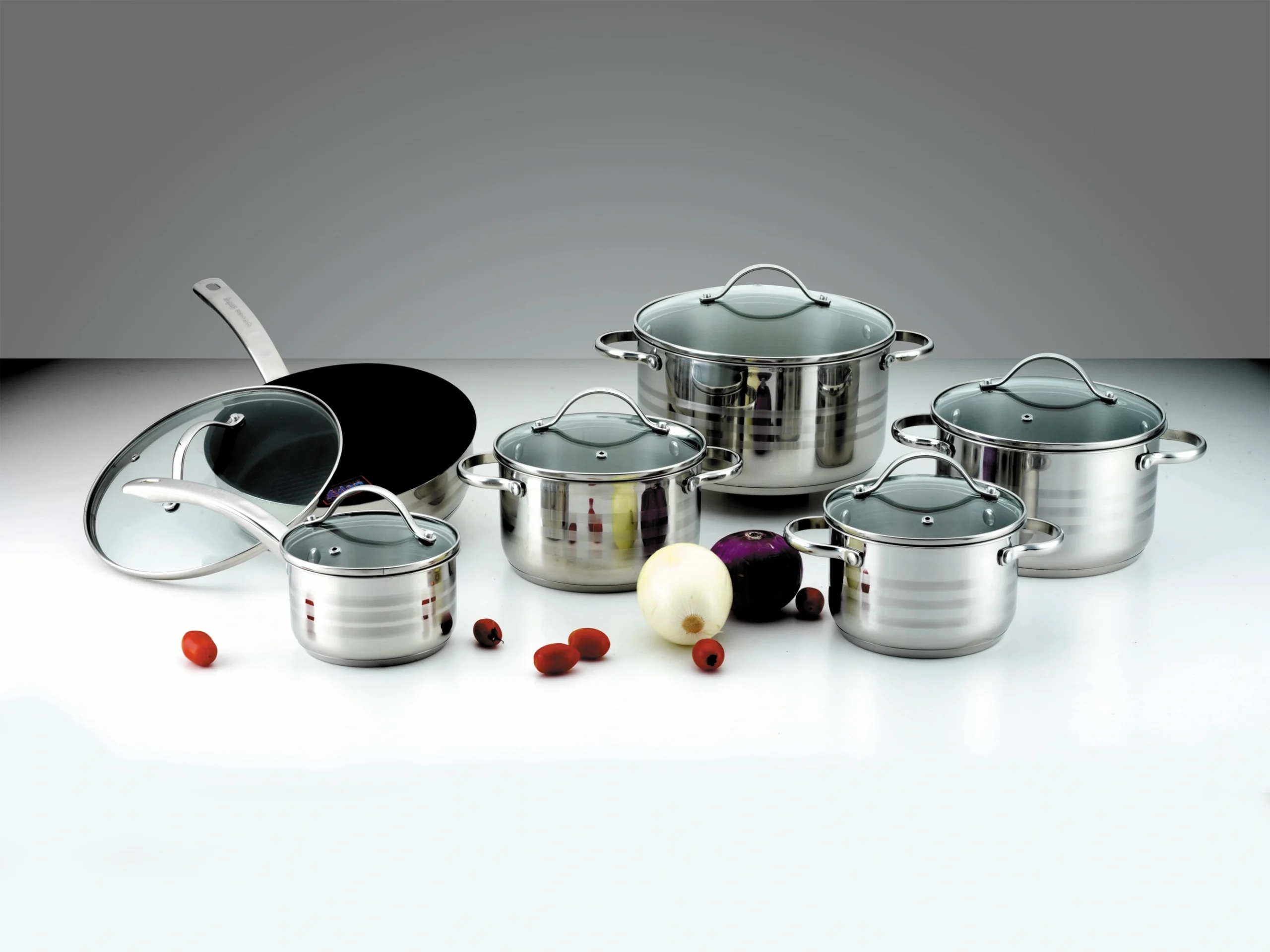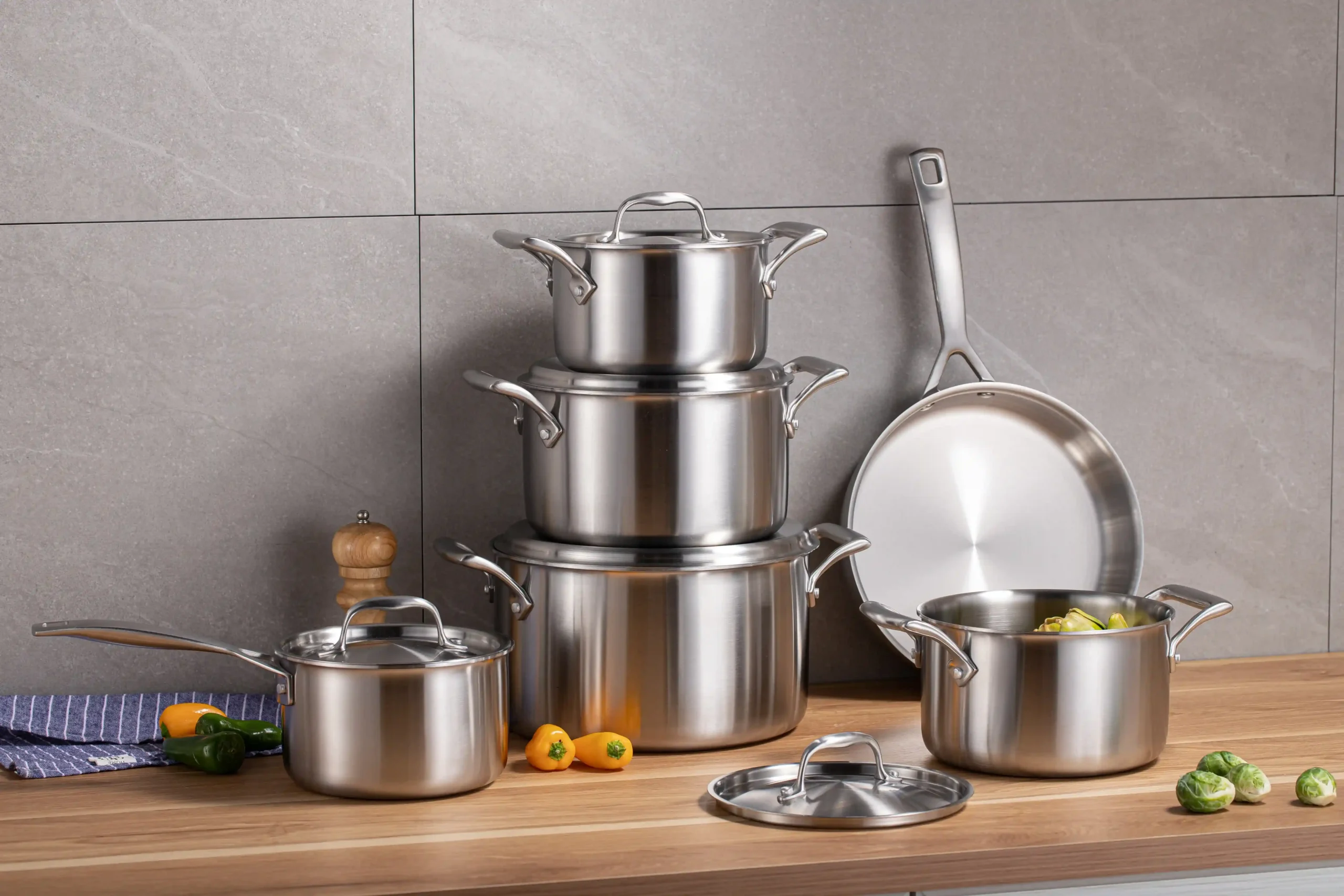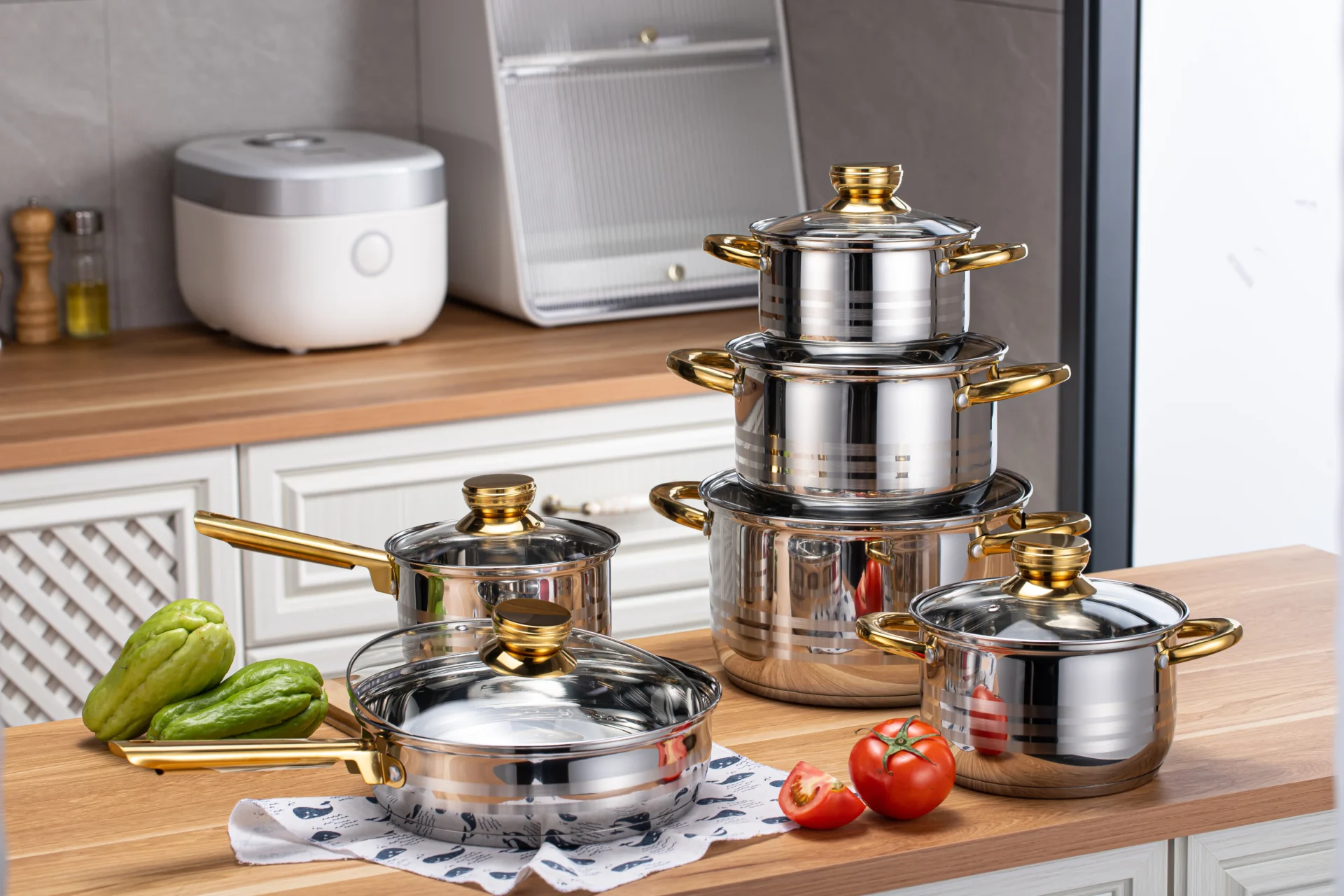
304 stainless steel pans are a staple in kitchens worldwide—valued for durability, food safety, and compatibility with most stovetops. But a common question from beginners is: Does a 304 stainless steel pan stick? The short answer is: It can, but only if you skip key steps or use the wrong methods. Unlike non-stick pans with chemical coatings, 304 stainless steel relies on proper seasoning, preheating, and usage habits to prevent sticking. Below, we’ll break down why sticking happens, share pro-level anti-stick tips, and highlight mistakes to avoid—with insights tailored to stainless steel cookware collections.
1. First: Does a 304 Stainless Steel Pan Actually Stick?
Let’s clear up the confusion: A well-maintained 304 stainless steel pan should not stick to food—if used correctly. Sticking usually stems from user error, not the material itself. Here’s why it might happen:
1.1 No Pre-Seasoning
304 stainless steel needs a light “seasoning” (a thin oil layer) to create a natural barrier between food and the metal. Without it, proteins (like eggs or fish) can bond to the pan’s surface.
1.2 Insufficient Preheating
A cold or underheated pan is the top cause of sticking. When the pan isn’t hot enough, food doesn’t sear quickly—instead, it sits and adheres to the metal.
1.3 Using the Wrong Utensils
Metal utensils scratch the pan’s surface, creating tiny crevices where food can get trapped. This is especially common with low-quality pans, but even premium models will suffer if paired with metal tools.
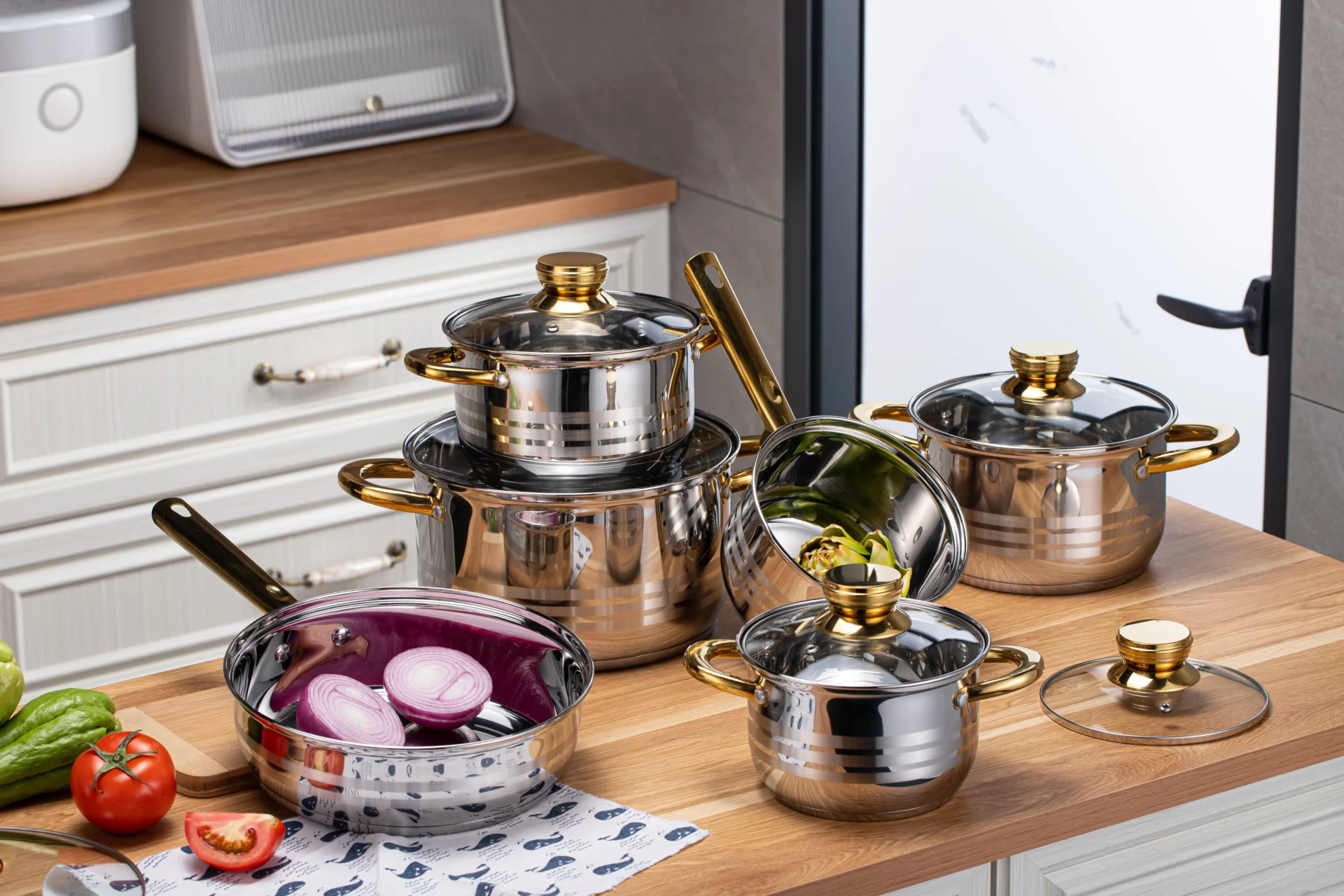
2. Pro Anti-Stick Tips for 304 Stainless Steel Pans
Follow these steps to keep food sliding off your 304 stainless steel pan—whether it’s a single frypan or part of a cookware set stainless:
2.1 Season the Pan Before First Use (and Re-Season Monthly)
Seasoning builds a natural, non-toxic barrier. Here’s how:
- Wash the pan with warm water and mild soap, then dry completely.
- Place it on low heat for 1-2 minutes to warm the surface.
- Add 1 teaspoon of neutral oil (e.g., vegetable or canola oil) and swirl to coat the entire interior.
- Turn heat to medium and let the oil shimmer (2-3 minutes)—don’t let it smoke.
- Turn off heat, let the pan cool, then wipe excess oil with a paper towel.
For cookware sets pots (like saucepans), repeat this process—focus on coating the bottom and lower sides.
2.2 Preheat Properly: The “Water Drop Test”
Never cook on a cold pan. Use this simple test to check if it’s ready:
- Place the pan on medium-low heat and let it warm for 2-3 minutes.
- Sprinkle 2-3 drops of water into the pan.
- If the water beads up and rolls around: The pan is hot enough—add food.
- If the water evaporates instantly: The pan is too hot—turn down heat.
- If the water sits flat: The pan is too cold—wait 1 more minute.
This tip works for all 304 stainless steel pieces, from a best frypan brand model to a large stockpot in a full cookware set.
2.3 Use the Right Oil (and the Right Amount)
- Choose High-Smoke-Point Oils: Avoid olive oil (low smoke point) for high-heat cooking. Opt for avocado, peanut, or canola oil—they withstand heat without breaking down.
- Don’t Over-Oil: A thin layer (1-2 teaspoons) is enough. Too much oil leads to greasy food and a sticky residue.
2.4 Let Food “Release” Before Flipping
Patience is key! For example, when frying eggs or steak:
- Let the food cook undisturbed for 1-2 minutes. You’ll know it’s ready to flip when it slides easily with a gentle nudge from a utensil.
- Rushing to flip will pull food apart and leave stuck-on bits.
2.5 Clean Immediately After Use (the Right Way)
Stuck-on food hardens when left to cool, making cleaning harder. After cooking:
- Let the pan cool slightly (1-2 minutes)—don’t rinse a hot pan with cold water (it can warp).
- Fill it with warm water and a drop of soap, then let it soak for 5 minutes.
- Scrub gently with a soft sponge (never steel wool!)—for tough spots, use a baking soda paste.
This keeps your pots and pans smooth, reducing future sticking.
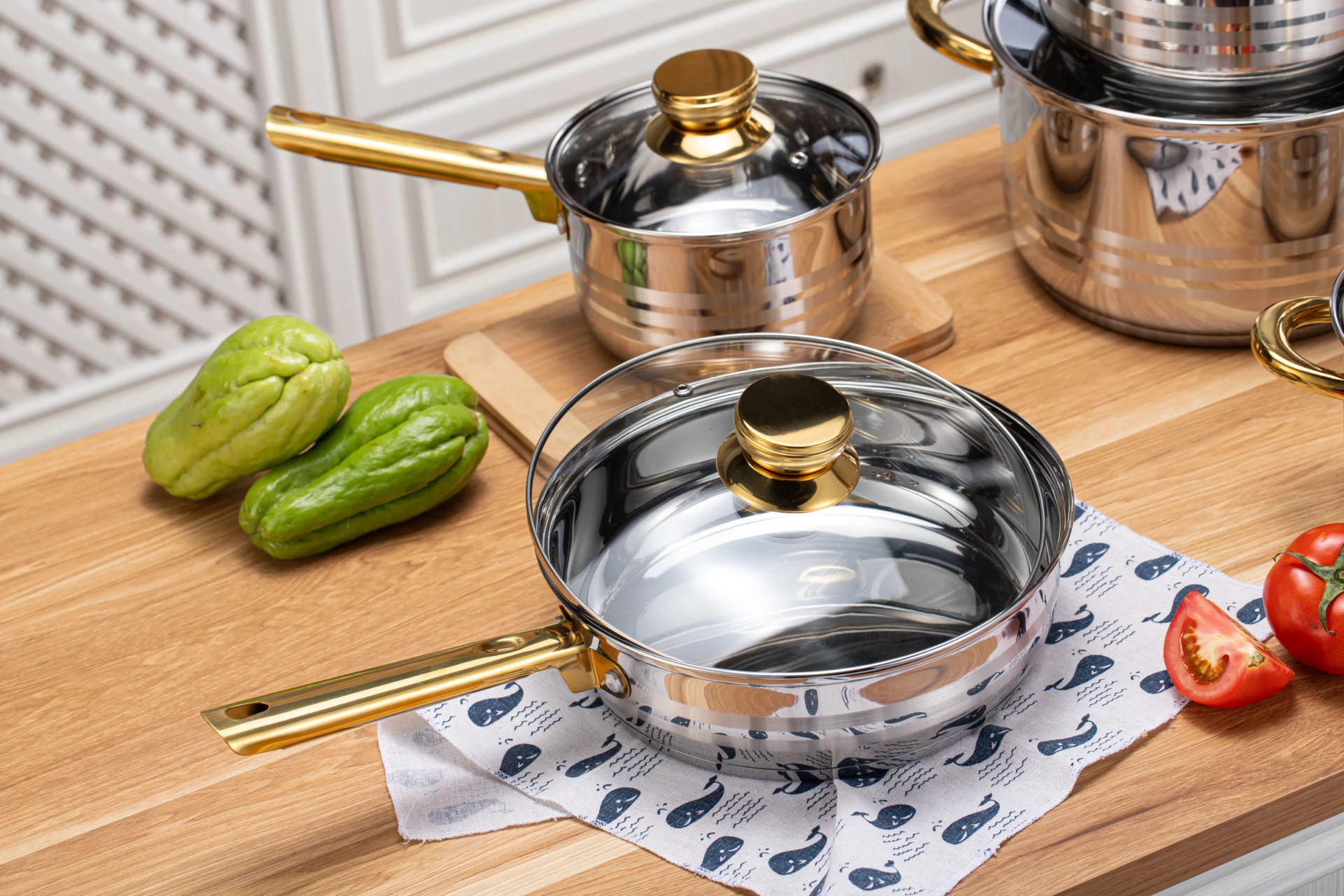
3. Common Mistakes Beginners Make (And How to Avoid Them)
Even with good intentions, beginners often make errors that cause sticking. Here’s what to watch for:
3.1 Using Metal Utensils
Metal spatulas or tongs scratch the pan’s surface, creating grooves where food sticks. Instead, use silicone, wooden, or nylon utensils—they’re gentle on 304 stainless steel and compatible with all cookware pieces.
3.2 Overcrowding the Pan
Cooking too much food at once lowers the pan’s temperature, leading to steaming (not searing) and sticking. For example, when frying chicken in a premium frypan, cook in batches—leave space between pieces for air circulation.
3.3 Skipping Post-Cooking Drying
Water spots aren’t just unsightly—they can create tiny pits on the pan’s surface over time. After cleaning, dry your pan (and all set pieces) immediately with a clean towel to prevent this.
3.4 Using Abrasive Cleaners
Steel wool, scouring pads, or harsh detergents strip the pan’s seasoned layer and scratch the surface. Stick to mild soap, baking soda, and soft sponges for long-lasting non-stick performance.
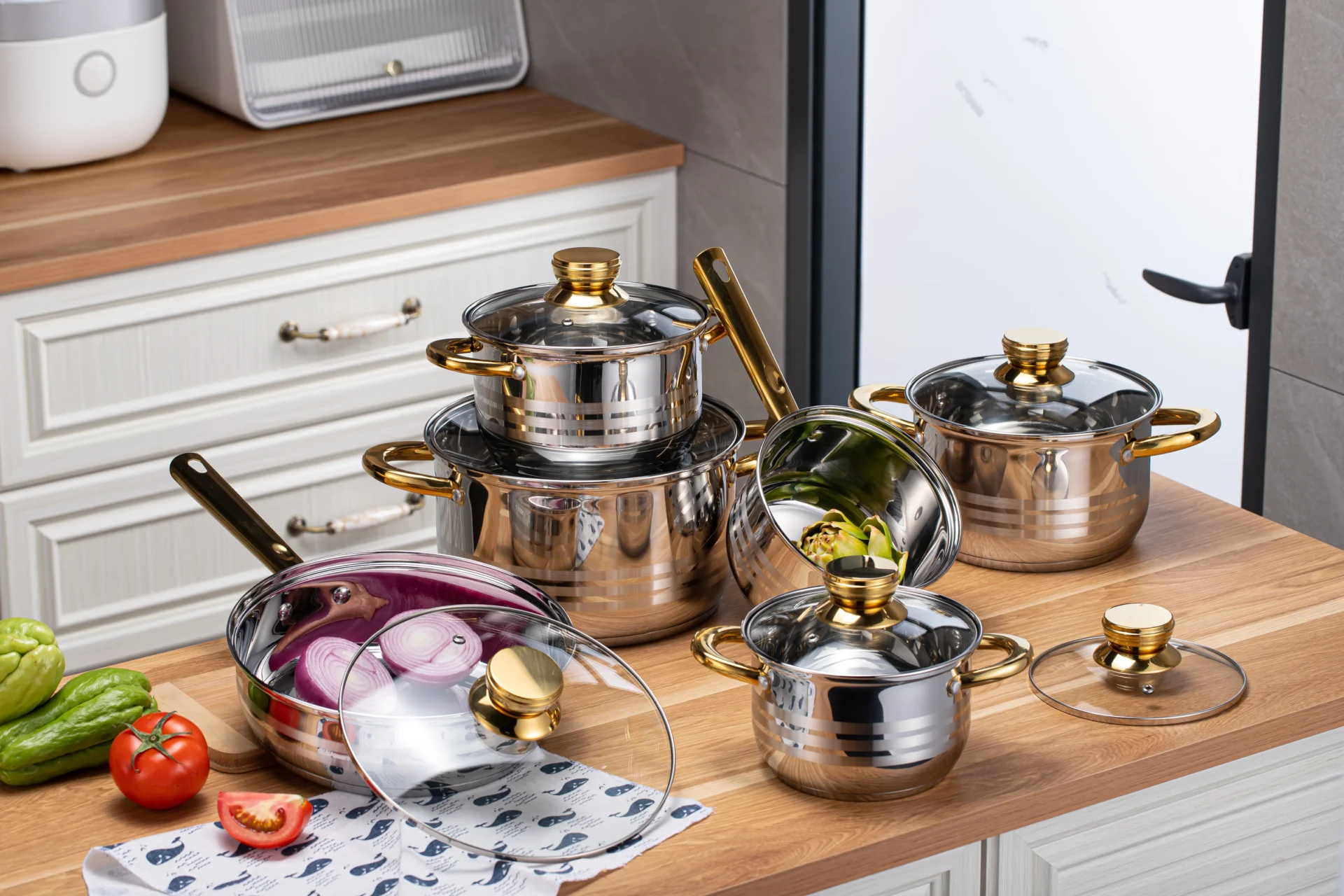
4. Why 304 Stainless Steel Beats Non-Stick Pans (Even With Sticking Myths)
You might wonder: Why not just use a non-stick pan? Here’s why 304 stainless steel is worth the extra care—especially in a complete cookware set:
- Safety: No toxic coatings that peel off into food (common with low-quality non-stick pans).
- Durability: A well-cared-for 304 stainless steel pan lasts 10+ years—non-stick pans need replacing every 1-2 years.
- Versatility: Works with induction, gas, and electric stovetops—unlike some non-stick pans that can’t handle induction.
- Even Heating: 304 stainless steel (especially in pots with multi-layer bases) distributes heat evenly, preventing hot spots that burn food.
5. Conclusion
So, does a 304 stainless steel pan stick? Only if you let it. With proper seasoning, preheating, and care, you can enjoy a naturally non-stick surface that’s safe, durable, and perfect for everyday cooking. Whether you’re using a premium frypan for breakfast eggs, a saucepan for simmering sauces, or a full cookware set stainless for family dinners, these tips will eliminate sticking and help you get the most out of your 304 stainless steel cookware. Remember: Good habits today mean years of hassle-free, delicious meals tomorrow.

